Top Sights in Moscow
Moscow has an enormous amount of sights which are worth visiting including museums, galleries, monasteries, churches, monuments, parks and historical sites. There are so many sights that you cannot possibly see everything Moscow has to offer if you are just on a short visit to the capital. Therefore below you will find a list of what in our opinion are Moscow's essential sights.
Red Square and the Kremlin
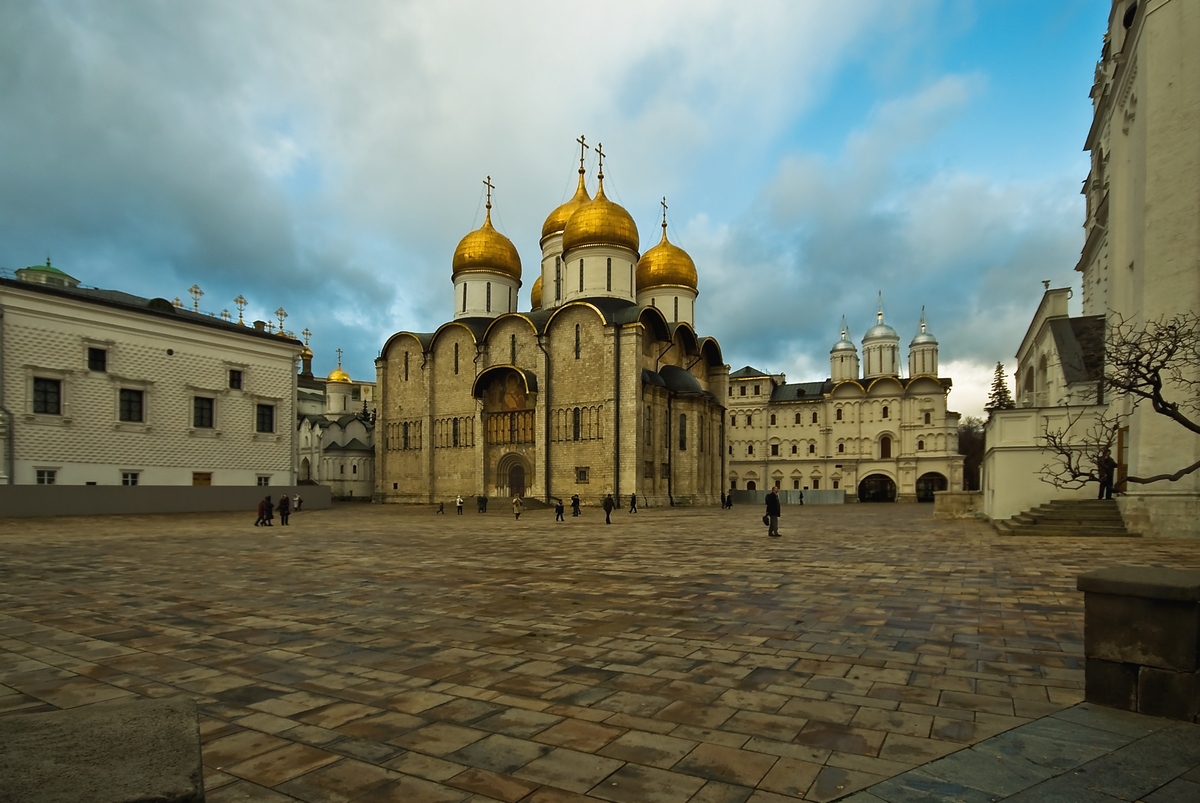
No visit to Moscow is complete without visiting its two most famous sights: St Basil's Cathedral on Red Square and the neighbouring Kremlin, both of which are UNESCO World Heritage Sites and located in the very heart of Moscow. Also situated on Red Square is the Lenin Mausoleum, the State History Museum and the GUM department store. Tickets must be bought to visit the territory inside the Kremlin where you will see the Archangel Michael, Dormition and Annunciation Cathedrals, several churches and palaces and the Tsar Bell and Tsar Cannon. The Kremlin has two other popular museums: the Armoury which is a veritable treasure trove of Russian history and the Diamond Fund where you can see collections of precious stones and the imperial crown jewels.
Christ the Saviour Cathedral
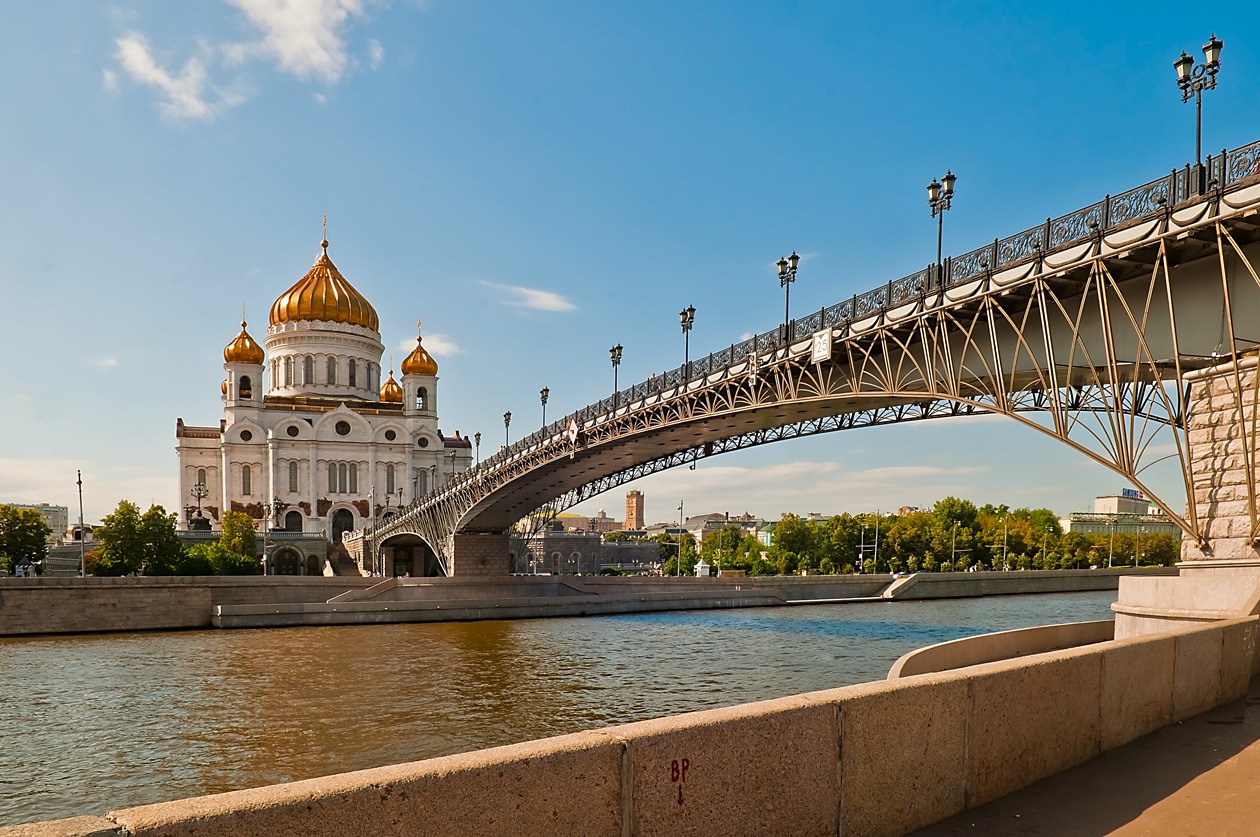
The most important cathedral in Russia is Moscow's Christ the Saviour Cathedral; it is also its largest, having been designed to accommodate 10,000 people. The current version is actually the cathedral's second incarnation as the original was famously demolished on the orders of Stalin in 1931, who wished to replace it with a giant Palace of Soviets, but these plans were later shelved. After the fall of the Soviet Union there were calls to rebuild the cathedral and construction work started in 1994 and was completed in 2000. In 2007 the funeral of President Yeltsin was held at the cathedral and in 2008 the funeral of Patriarch Alexius II.
Tretyakov Gallery
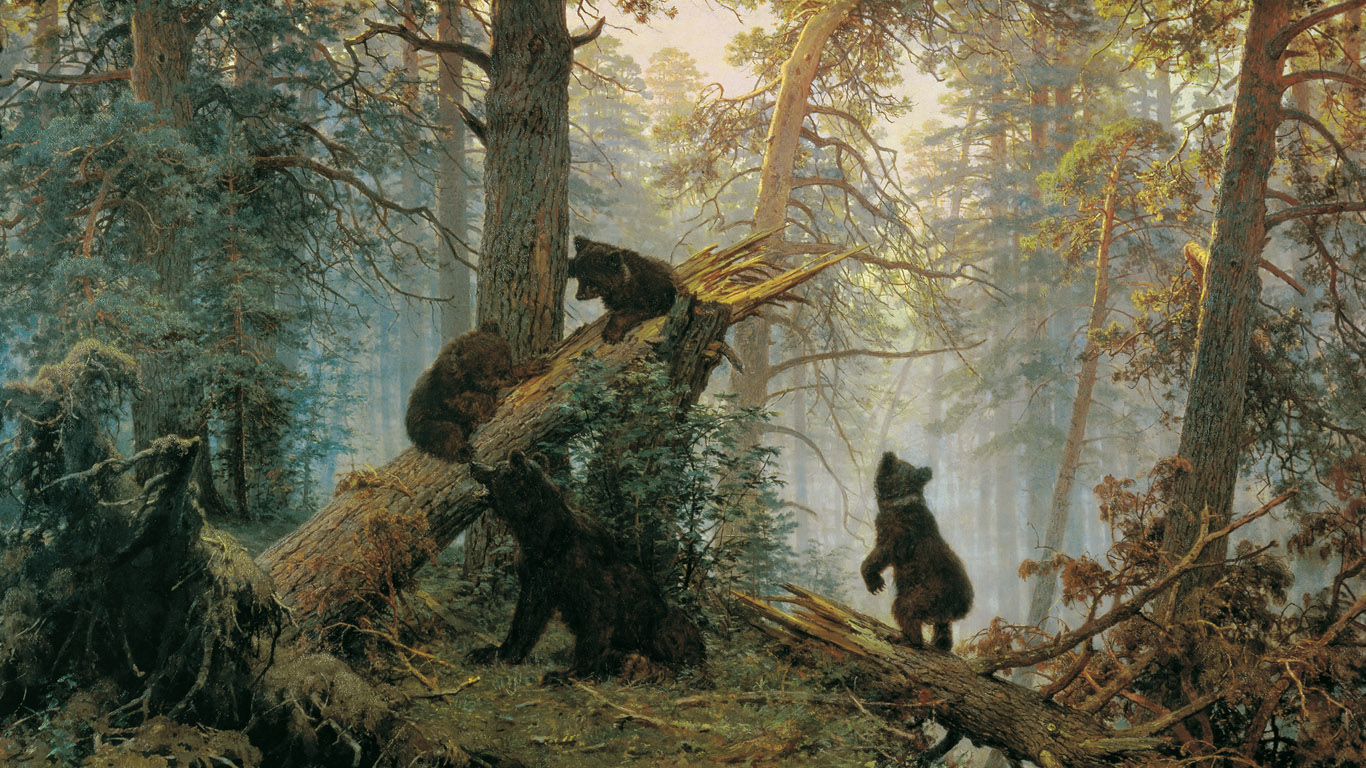
Out of Moscow's many museums, one of the most popular with tourists is the State Tretyakov Gallery which is one of the foremost art galleries in the world exhibiting some of the masterpieces of Russian art. The gallery bears the name of its founder Pavel Tretyakov who began collecting works of art in the mid-19th century and later donated his collection to the city of Moscow. Artists whose work are displayed at the gallery include Nikolai Ge, Kasimir Malevich, Ilya Repin, Ivan Shishkin, Vasily Surikov, Viktor Vasnetsov, Vasili Vereschagin and Mikhail Vrubel. Ancient icons are also represented including work by masters Andrey Rublev and Dionisius and the revered Our Lady of Vladimir Icon.
Gorky Park
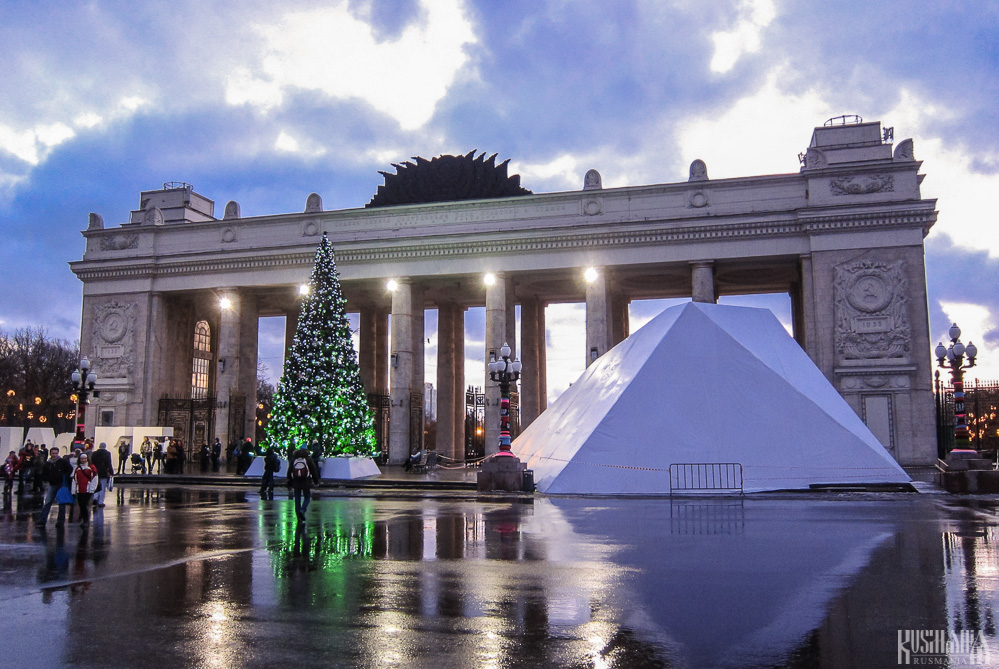
Moscow is actually one of the greenest capital cities with many parks and even forests within its borders. The most famous of its parks is probably Gorky Park which was established along the bank of the River Moskva in 1928 and named in honour of the author Maksim Gorky in 1932. In 2011 the park was given a new lease of life following a large-scale renovation. Many of its avant-garde buildings were restored and its tacky out-dated amusement rides were removed with the park being transformed into a modern, eco-friendly recreational area with many areas for sports and activities. In winter the park turns into the biggest ice rink in Europe. The park continues along the river as Neskuchny Sad (Not-Boring Gardens) and then the Sparrow Hills Nature Reserve. Since the recent renovation, the park has become extremely popular with Muscovites and visitors to the city.
Novodevichy Convent
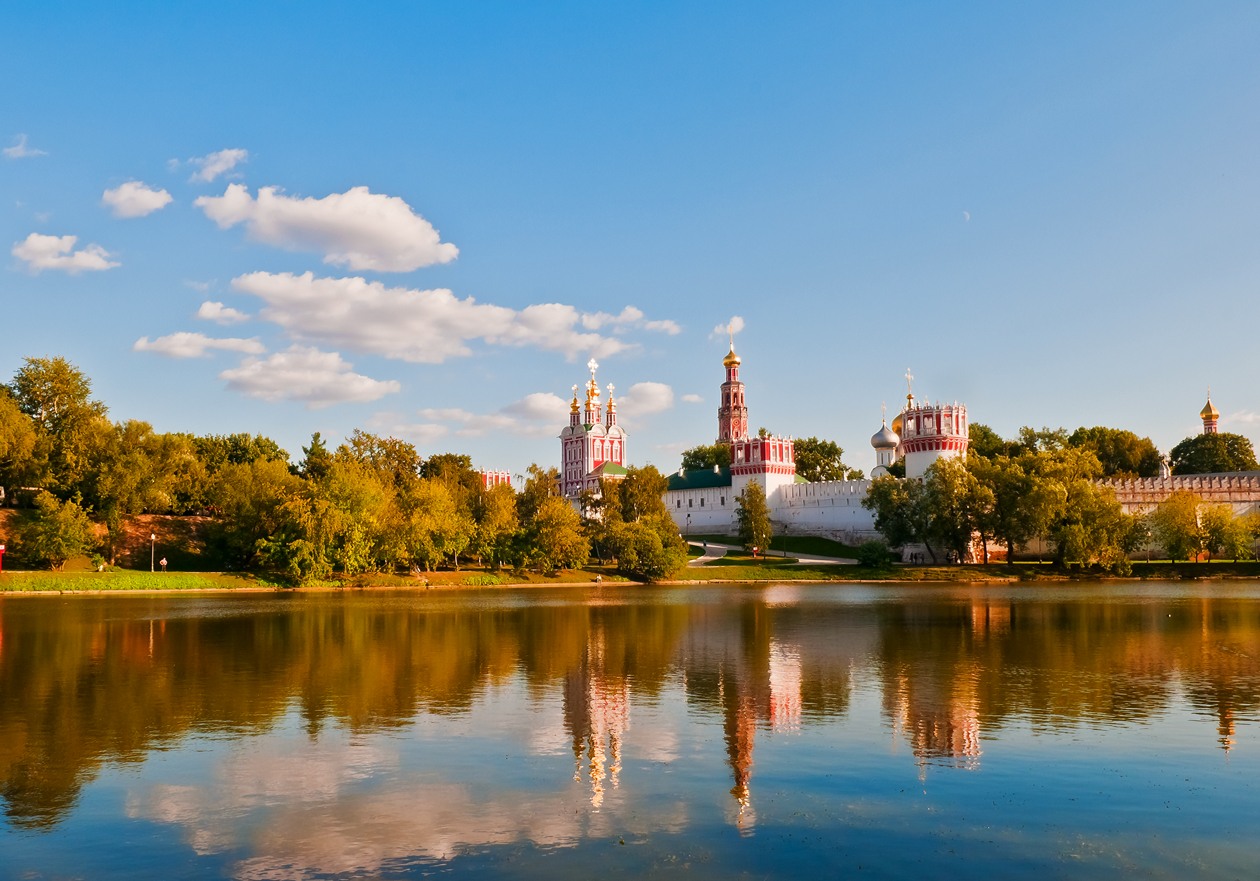
One of Moscow's most beautiful sights is the Novodevichy Convent which was included on the UNESCO World Heritage List in 2004. Novodevichy Convent, whose name translates as New Maiden Convent, was founded as a fortified convent in 1524 on the orders of Grand Prince Vasili III of Moscow to celebrate Russia's recapture of Smolensk in 1514. Today the convent is run as a branch of the State Historical Museum, although some of its churches have been reopened for worship. Next to the convent is the equally interesting Novodevichye Convent where many of the most famous figures in Russian culture are buried, including Mikhail Bulgakov, Anton Chekhov, Sergey Eisenstein, Nikolai Gogol, Vladimir Mayakovsky, Yuri Nikulin, Mstislav Rostropovich, Konstantin Stanislavsky and many more.
Moscow State University
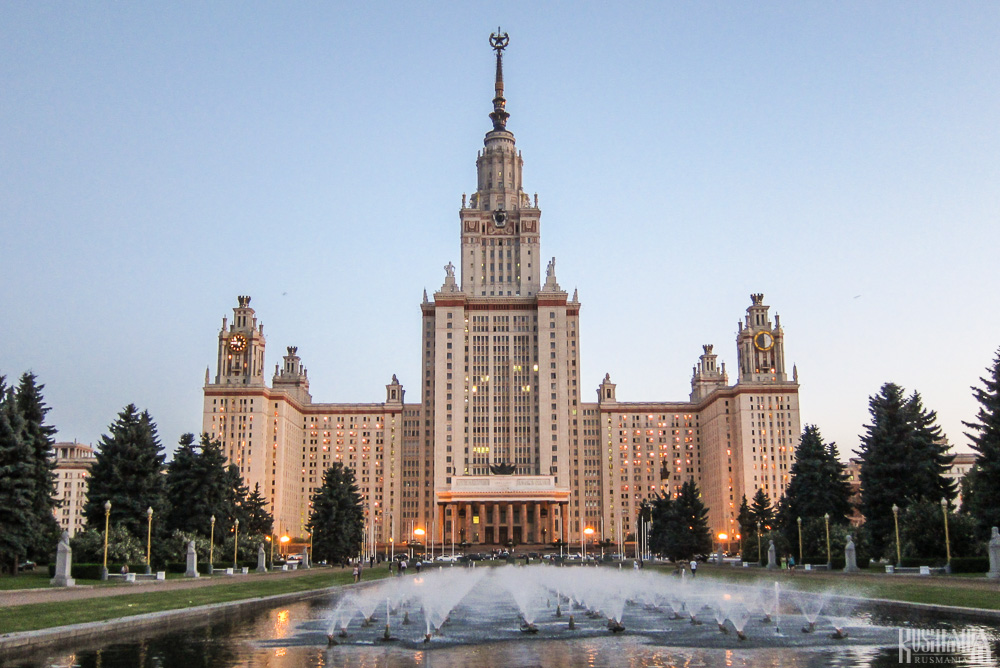
Situated around the centre of Moscow are seven gothic style skyscrapers which were built under Stalin and have since become known in English as the Stalin Skyscrapers or the Seven Sisters. Perhaps the most impressive of these is the main building of the Lomonosov Moscow State University which stands on the top of Sparrow Hills (Vorobyovy Gory); it is certainly the tallest of the seven standing at 182 metres tall or 240 metres tall if you include the spire. It was built between 1949 and 1953 and its main architect was Lev Rudnev. Its facade is decorated with sculptures by the famous sculptress Vera Mukhina. In addition to the spectacular building, just outside the front of the university is a viewing platform from where you can enjoy great views of the city.
Old Arbat
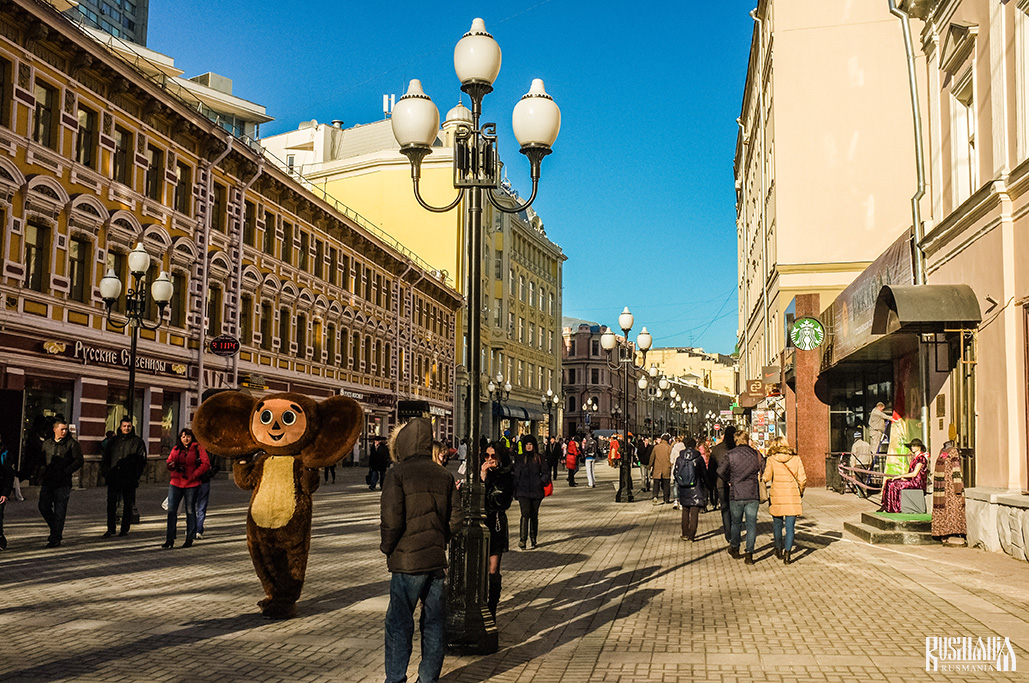
The pedestrian street of Ulitsa Arbat, which is commonly called Old Arbat to distinguish it from Ulitsa Novy Arbat (New Arbat Street), is one of the most famous streets in Moscow. The street has existed since at least the 15th century and became Moscow's first pedestrian zone in the 1980s. Since then it has become a favourite spot for both locals and tourists. In addition to Old Arbat's book and souvenir stalls, street performers also gather here. Located on the street are many bars, restaurants and fast-food establishments, as well as the Vakhtangov Theatre.
Victory Park
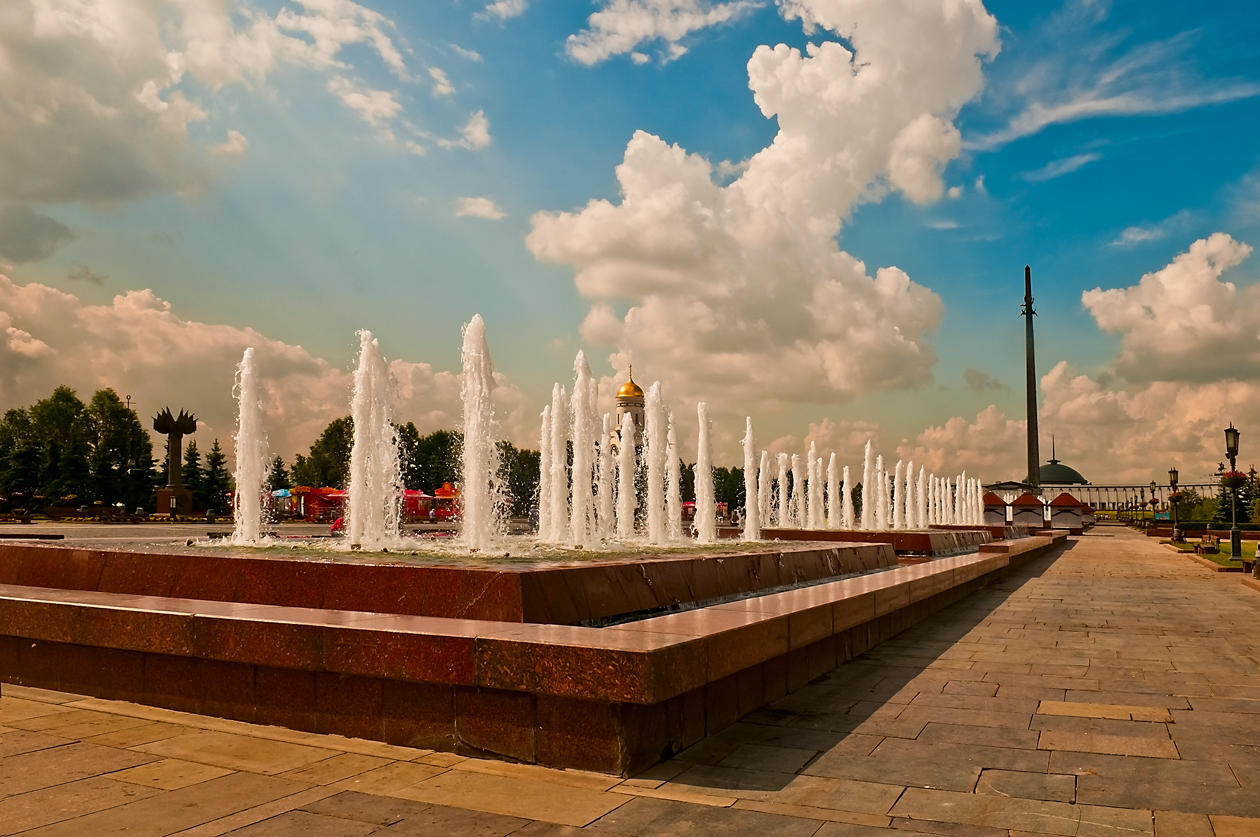
One of the main sights in the west of Moscow is Victory Park (Park Pobedy) which was create to commemorate the Soviet victory in the Second World War. Today it is an important venue for Russia's Victory Day celebrations on 9 May where veterans gather and are thanked and given flowers by younger generations. The park is dominated by the massive Victory Monument which stands in front of the semi-circular Central Museum of the Great Patriotic War. More monuments can be found in the park, including monuments dedicated to the peoples of the Soviet Union who united against Hitler and to the USSR's allies, as well as a haunting Holocaust memorial.
All-Russia Exhibition Centre at VDNKh
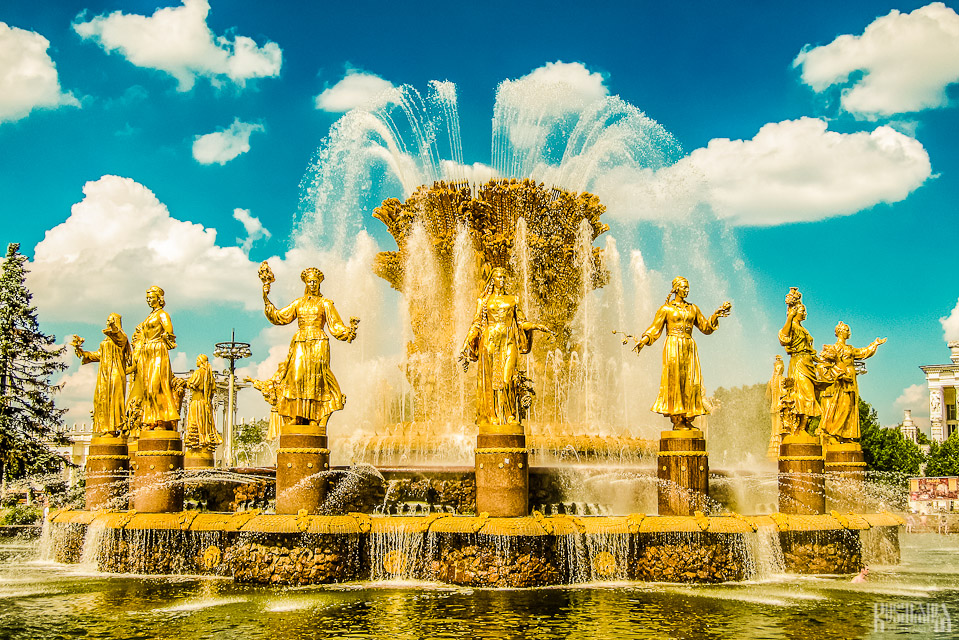
For anyone with an interest in the Soviet Union, the All-Russia Exhibition Centre in the north of Moscow is a must. The centre was officially opened in 1939 as the All-Union Agricultural Exhibition, but after the Second World War it was reconstructed and in 1959 the whole centre was reopened as the Exhibition of the Achievements of the National Economy of the USSR (known but its Russian initialism of VDNKh). The centre was envisaged as a showcase for the achievements of the Soviet Union in various spheres and for this purpose many extravagant exhibit halls were built each dedicated to a different branch of science or technology, or to a different area or republic of the USSR. In 1992 the exhibition centre was renamed the All-Russia Exhibition Centre and, although most of the pavilions no longer serve their original purpose, the centre is still a time capsule of the Soviet Union and of Stalinist architecture. Just outside the centre is the equally impressive Conquerors of Space Monument and Vera Mukhina's iconic Worker and Kolkhoz Woman Monument.
Vernisazh and Ismailovo Kremlin
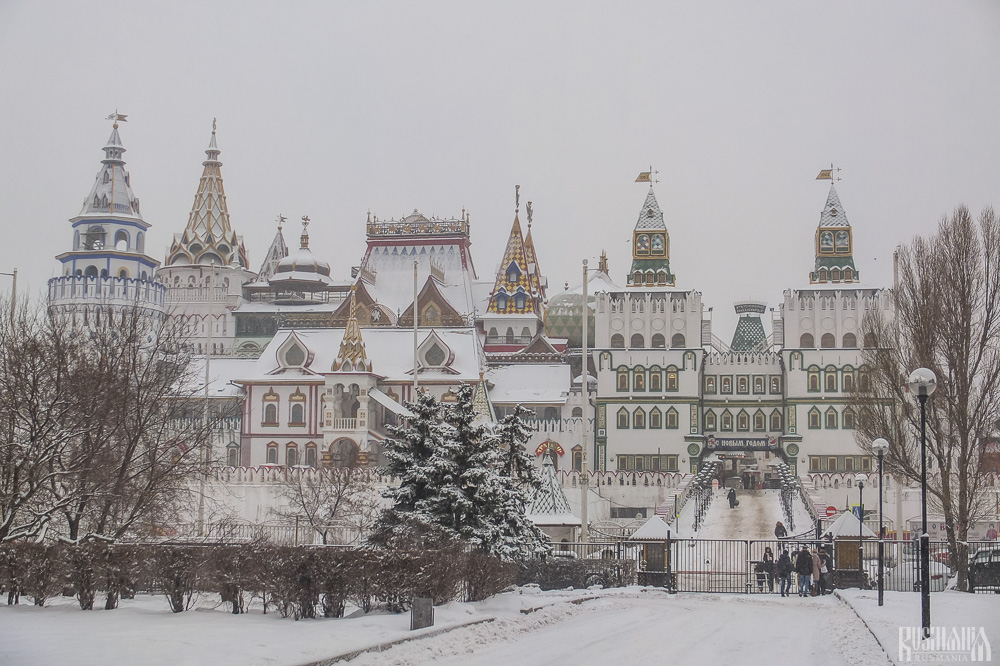
Not everybody knows that there is in fact a second kremlin in Moscow located in the area of the capital historically known as Izmailovo. Unlike the main Kremlin though, the Izmailovo Kremlin is not a historical site but a modern day wooden cultural and entertainment complex. Here you will find many replicas of medieval palaces plus restaurants, shops and even a registry office. There are also museums and exhibits dedicated to vodka, bread, Russia toys and various Russian arts and crafts, as well as the wooden St Nicholas' Church. Built onto the Izmailovsky Kremlin is the Imailovsky Vernisazh which is actually the largest applied-art market in the world and popular with tourists on the hunt for Russian souvenirs. If you are looking for souvenirs, be it Russian hats, Russian dolls, artwork, military gear, magnets or DVDs and CDs, then this is the place for you as Vernisazh has the biggest choice and the best prices, especially if you can haggle. Behind the souvenir market is a flea market where you can buy all sorts of items, including many Soviet-era curiosities.
Kolomenskoe Estate
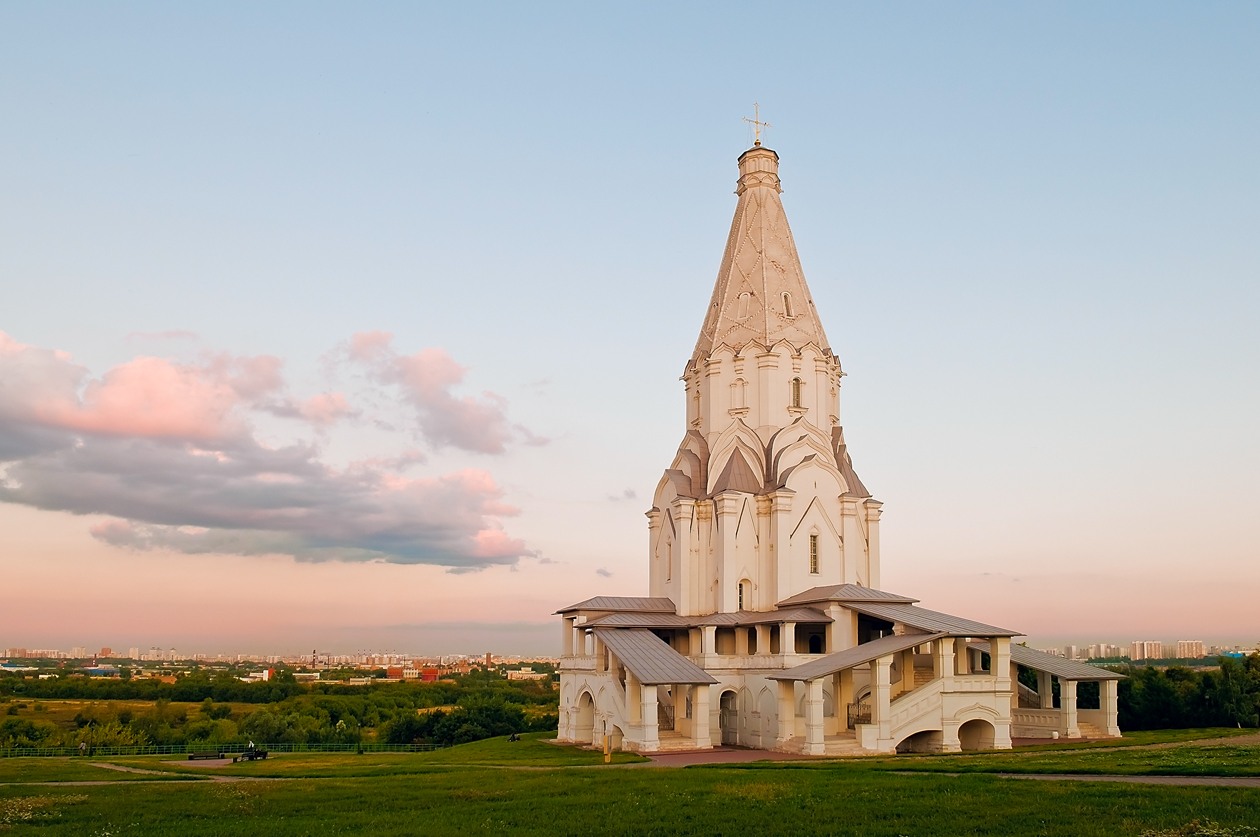
One of Moscow's most popular estates and one of the most popular sights outside of the city centre is the Kolomenskoe Estate. During the reign of Tsar Alexis, Kolomenskoe became a royal residence and a grand wooden palace was built here. The palace had fallen into disrepair by the time of Catherine the Great who had it demolished, but a modern recreation of it can be found in the south of the estate. Other buildings of the Tsar's Court have survived and on the neighbouring Voznesenskaya Ploschad is the UNESCO-protected Ascension Church which was built on the orders of Grand Prince Vasili III to celebrate the birth of his son - Ivan the Terrible. Several wooden buildings from various parts of Russia have also been brought to the estate for preservation including a cabin of Peter the Great, who was born at the Kolomenskoe Estate. The estate covers a very large area and you could spend most of the day here if you want to see everything, including the park's natural attractions, but if you are short of time the main area worth visiting in the estate is the Tsar's Court and Voznesenskaya Ploschad.
Moscow Metro
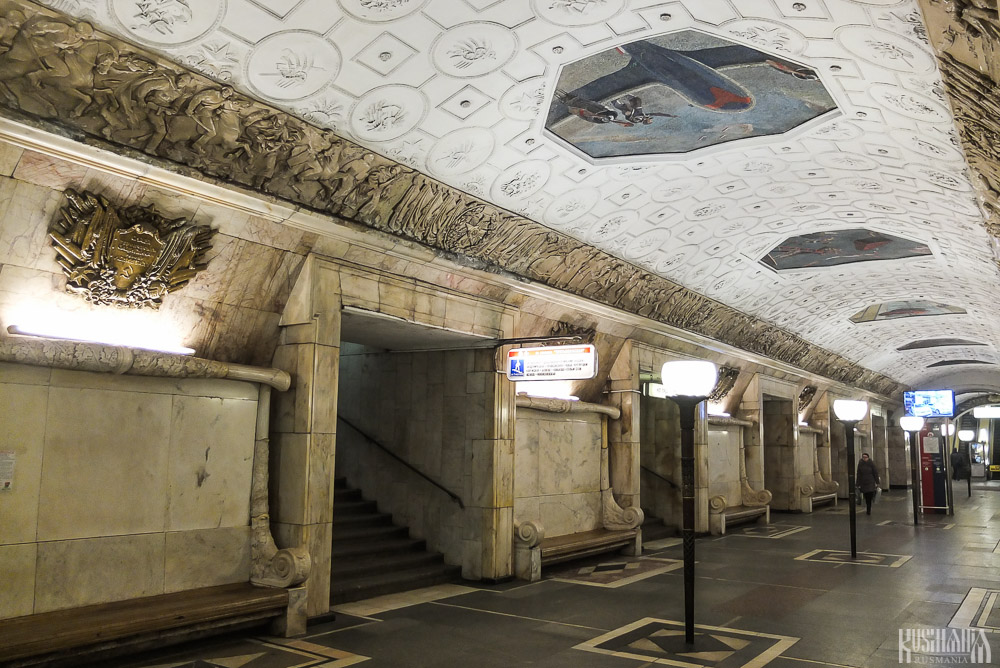
The Moscow Metro is often credited with being the most beautiful metro systems in the world. When it was being designed it was not just envisaged as a means of getting from A to B but also as a celebration of the workers. Many of the stations are decorated with themed panels, mosaics, chandeliers, sculptures and stain-glassed windows of various artistic styles and look more like underground palaces than metro stations. As such the metro is a tourist attraction in itself and should not be missed. It is also possible to visit the best stations as part of a guided tour. The most beautiful stations are located on the circle line. In any case the metro is often the best way of travelling around the capital as it is extremely efficient and avoids Moscow's notorious traffic jams.
ALSO HAVE A LOOK
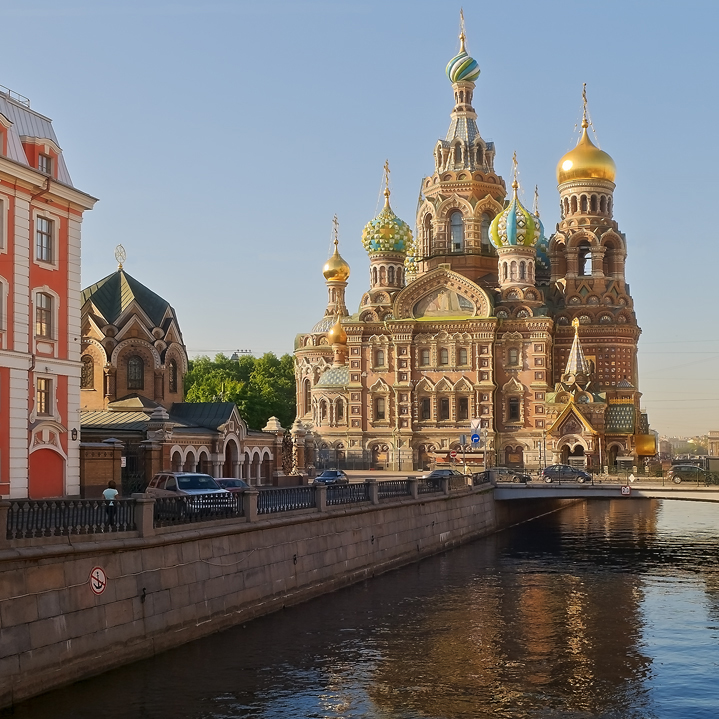 St Petersburg is the most touristic city in Russia with over 200 museums and around 6000 monuments! In order to make the most of your visit to the Northern Capital we have prepared for you a list of the sights which are essential for visiting. Read more...
St Petersburg is the most touristic city in Russia with over 200 museums and around 6000 monuments! In order to make the most of your visit to the Northern Capital we have prepared for you a list of the sights which are essential for visiting. Read more...